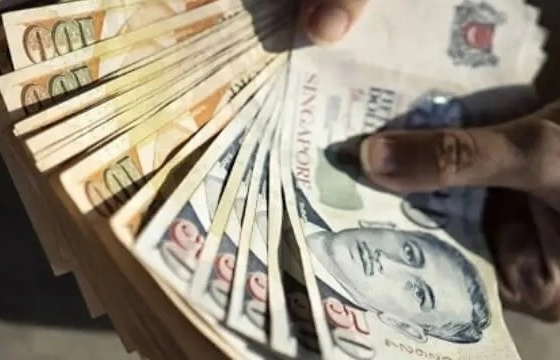Missing jet a big blow for struggling Malaysia Airlines

Malaysia Airlines (AFP/File - Tengku Bahar)
KUALA LUMPUR: Malaysia Airlines, which was rocked Saturday by the disappearance of one of its planes, has long been a respected name in regional aviation, enjoying an enviable safety record.
Flight MH370 from Kuala Lumpur to Beijing disappeared in the early hours of Saturday morning, triggering a vast search effort in the South China Sea and sparking grave fears for the 239 people on board.
The incident will be a major blow to the airline, which has struggled to remain profitable recently against a host of nimble competitors, particularly the rise of budget airlines.
Malaysian Airlines flies about 37,000 passengers daily to 80 destinations across Asia, and to Europe and the United States. It operates more than 250 flights a day.
The carrier has suffered few incidents in its history and has a solid safety record.
Its worst accident came in 1977, when a hijacking and subsequent crash in southern Malaysia killed 93 passengers and seven crew.
The airline has a fleet of 88 aircraft including Boeing 747-400s, Boeing 777-200s and Airbus A380-800s.
The plane that disappeared Saturday somewhere over the South China Sea -- believed near Vietnam airspace -- was a Boeing 777-200, considered one of the safest planes in the industry.
First formed in 1947 as Malayan Airways, the airline went through a series of organisational changes culminating in its 1972 re-launch under its current name.
The flag carrier's steady expansion gained pace in the 1980s, benefiting from the Malaysian economy's rapid export-led growth. Its fleet and route system grew rapidly.
But the Asian financial crisis that rocked the region in 1997 pushed the airline into the red, forcing it to undertake a series of steps including cutting unprofitable routes and reducing costs.
The company subsequently see-sawed between profit and loss, with its balance sheet looking increasingly shaky.
It has bled red ink in recent years as its struggles to fend off competition from rivals such as fast-growing Malaysia-based budget airline AirAsia.
"This incident comes at a most unfortunate time for the airline which is undergoing a transformation to return to profit," said Shukor Yusof, aviation analyst with Standard & Poor's Equity Research in Singapore.
"It will further aggravate its road to profitability."
Malaysia Airlines has drawn derision from some observers and analysts with its announcement of a series of "recovery" plans aimed at steering it back into the black over the years.
None has succeeded, and critics have accused the government of keeping the state-linked airline afloat with cash injections of taxpayers' money rather than launching painful and necessary reforms.
Analysts also blame poor management, government interference, a bloated workforce, and powerful, change-resistant unions for preventing the airline from remaining competitive.
In 2011, it chalked up a record 2.5 billion ringgit ($767 million) loss, due in part to rising fuel costs.
Its managers admitted in 2012 the airline was in "crisis", implementing yet another cost-cutting campaign.
Malaysia Airlines recorded four successive quarterly losses in 2013 and warned of a "challenging" year ahead due to intense competition.
Despite its troubles, the airline has continued to win accolades for the quality of its service.
Last year, it became a full member of Oneworld, one of the world's largest airline code-share alliances, connecting it to some 850 destinations in 150 countries across the group's network.
What the stars mean:
★ Poor ★ ★ Promising ★★★ Good ★★★★ Very good ★★★★★ Exceptional
Latest News
More News
- Thailand seeks to promote digital training (November 04, 2024 | 16:14)
- Indonesia attracts foreign investment in technology sector (November 04, 2024 | 16:08)
- Tropical storm Trami leaves at least 24 people dead in Philippines (October 24, 2024 | 17:36)
- Singapore grants conditional approval for solar power import from Australia (October 24, 2024 | 17:27)
- ASEAN digital economy set to reach $2 trillion by 2030 (October 22, 2024 | 15:08)
- Thailand asks Laos to waive visa fee at border checkpoints to boost tourism (October 21, 2024 | 17:23)
- Laos pledges to continue efforts to empower girls (October 21, 2024 | 17:17)
- Chinese electric vehicle maker to build plant in Indonesia (October 21, 2024 | 17:12)
- Vietnam Elevator Association introduces Elevator Safety Application to the world (October 18, 2024 | 09:00)
- A taste of the future - the go-to spot at the Worldchefs Congress & Expo 2024 (October 15, 2024 | 16:11)
















 Mobile Version
Mobile Version